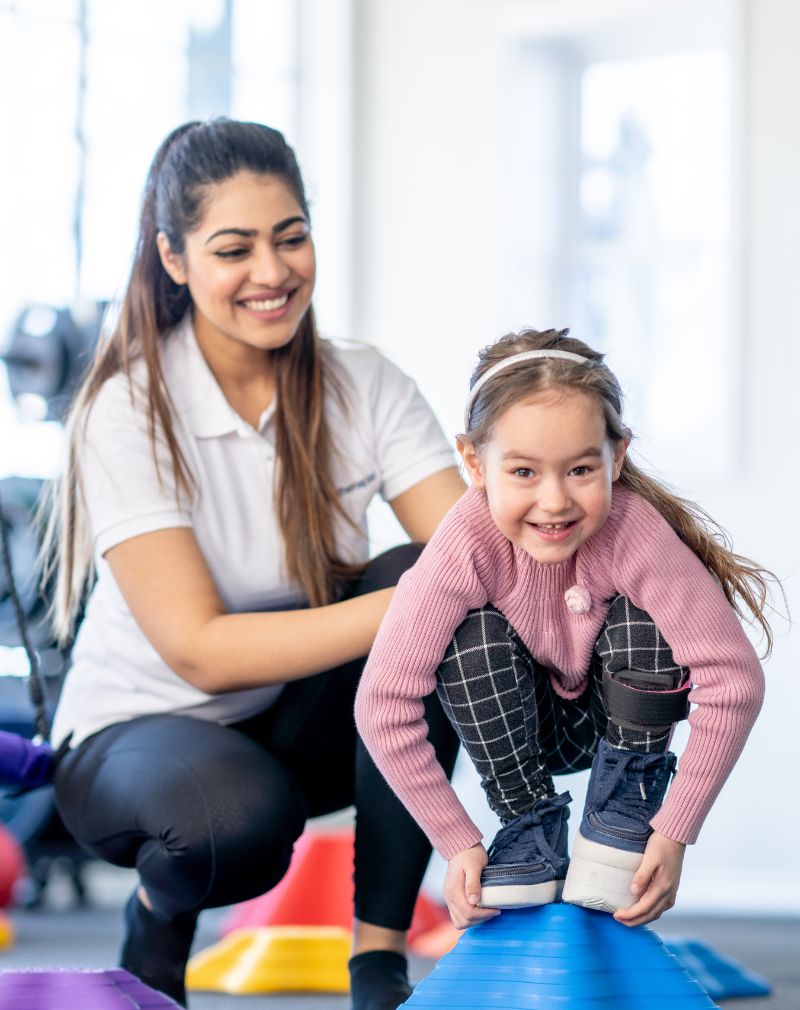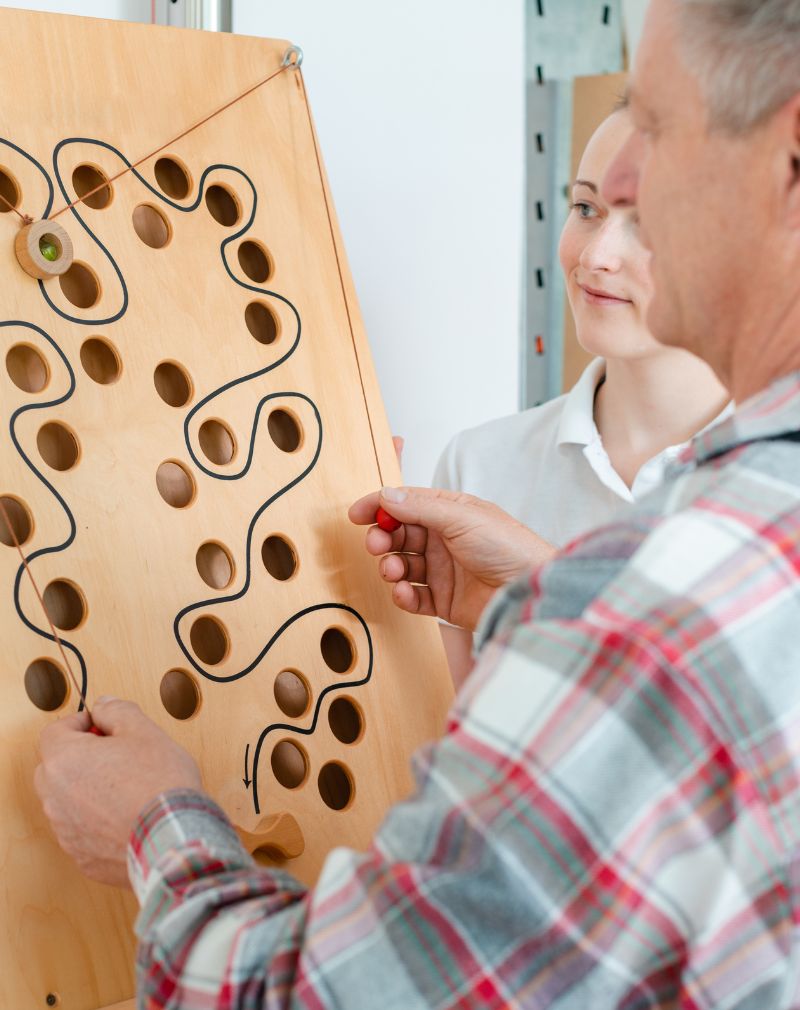Ever feel like you’re trying to make sense of your child’s challenges, but the answers just aren’t clear?
You’re not alone.
Whether it’s understanding why your little one avoids certain textures, struggles to hold a pencil, or melts down during routine tasks, figuring out what’s really going on can be overwhelming. That’s where occupational therapy steps in — and more specifically, how assessments shape the path forward.
At The American Wellness Center in Dubai Healthcare City, our Occupational Therapy team works with families every day to untangle these concerns. One of the most important first steps in the process? Assessment. But here’s the thing — not all assessments are the same.
In fact, over 93% of occupational therapists worldwide use standardized tools. But the truly insightful ones often pair them with non-standardized assessments. Why? Because real life doesn’t always follow a script. And neither do children or adults navigating sensory, motor, or developmental hurdles.
And if you’re based here in Dubai, or even just visiting, The American Wellness Center is one place where these two worlds come together. Our Occupational Therapists use both types of assessments to build care plans that feel personal, practical, and grounded in your real-life needs.
What Are Standardized Assessments?
Let’s keep it simple.
Standardized assessments are structured tests. They’re carefully designed, scored the same way for everyone, and give us numbers we can compare — across age groups, across countries, even across time.
At The American Wellness Center in Dubai Healthcare City, we use these tools to get a clear starting point. Whether we’re assessing a child’s sensory needs, coordination, or school-readiness, standardized assessments help us know where they stand compared to expected milestones.
Some of the well-known ones we often use:
- Sensory Profile 2 – helps us understand how a child responds to things like sound, touch, or movement.
- Peabody Developmental Motor Scales (PDMS-2) – measures fine and gross motor skills in young children.
- BOT-2 (Bruininks-Oseretsky Test of Motor Proficiency) – used for older children to assess balance, strength, and coordination.
These tests are super helpful when we need:
- Baseline data to measure progress over time
- Reports to support school or insurance paperwork
- Evidence that guides goal-setting in therapy
But here’s the thing — they can’t tell us everything.
They’re great at showing us the “what.”
But not always the “why.”
That’s why, at AWC, our occupational therapists never stop at the score sheet. We use standardized assessments as a foundation — and then go deeper with non-standardized tools that reveal how those challenges show up in daily life.
And when we use both? That’s when therapy really starts to make sense.
What Are Non-Standardized Assessments?
Here’s where things get a little more real.
Non-standardized assessments are like sitting with someone and just watching their day unfold. There’s no checklist, no stopwatch, no bubble sheets. It’s about understanding how a person moves, reacts, communicates — in their own world, on their own terms.
At The American Wellness Center in Dubai Healthcare City, our occupational therapists often use non-standardized tools to capture the story behind the struggles. Especially when the puzzle pieces don’t quite fit the mold.
We might:
- Watch how a child plays when no one’s guiding them.
- See how they hold a fork at lunchtime.
- Ask a parent what mornings look like — from buttoning shirts to brushing teeth.
These aren’t just cute observations. They’re windows into how someone functions in real life, where routines and challenges don’t always show up in a formal test.
And they matter because:
- They adapt to the person, not the other way around.
- They respect cultural differences — what’s “normal” here in Dubai might look very different elsewhere.
- They capture the messy, meaningful, everyday stuff that tells us what someone actually needs.
So while standardized tests can tell us if a child’s motor skills are on track for their age, non-standardized assessments show us if they can get through the school day without needing help every few minutes. Big difference.
Why Both Are Essential in Occupational Therapy
Think of it like this.
Standardized assessments give us the map.
Non-standardized assessments show us the terrain.
At The American Wellness Center, we never rely on one without the other. Because healing, growth, and support need to be measured and understood.
Let’s say a child scores just fine on a fine motor test like the BOT-2. Great, right? But then we observe them at school — they fumble with zippers, avoid using scissors, and scribble instead of writing. That’s where the non-standardized piece steps in.
It fills the gap between what’s on paper and what’s lived.
When we use both:
- We get clear benchmarks.
- We see patterns in behavior that numbers can’t always explain.
- We build therapy plans that fit the child, not just the chart.
That’s the heart of what we do at AWC. Our occupational therapy services blend structure with empathy. Science with real-life insight. And it’s this combination that helps both kids and adults make meaningful, lasting progress.
Because no one’s life fits neatly in a box — and neither should their care.
AWC’s Approach to Integrated Assessments
We don’t believe in one-size-fits-all.
Our occupational therapists at AWC combine structure and insight — using standardized tools to build clear goals, and non-standardized ones to bring therapy into real life.
This approach helps us:
- Build therapy plans that fit your world, not just a chart
- Measure real progress in ways that feel meaningful
- Adapt to Dubai’s beautiful mix of cultures, languages, and lifestyles
Whether we’re working with a child, a teen, or an adult, our team brings deep knowledge and care to every assessment.
Who Can Benefit from a Balanced Assessment Approach?
This kind of assessment isn’t just for one group — it’s for anyone who needs clarity and care.
- Children with delays in movement, play, or attention
- Adults relearning life skills after injury or illness
- Families navigating sensory sensitivities
- Parents looking for better school support or understanding
At AWC, we meet each of these journeys with a fresh, thoughtful approach.
A Clearer Path Starts with Understanding
Getting support shouldn’t feel like another weight on your shoulders.
When you understand why something is happening — and how to move forward — everything changes. That’s what thoughtful assessment can do.
If this sounds like something you or your family might need, reach out. Even just a conversation with our team at The American Wellness Center in Dubai Healthcare City can make the next step feel lighter.



